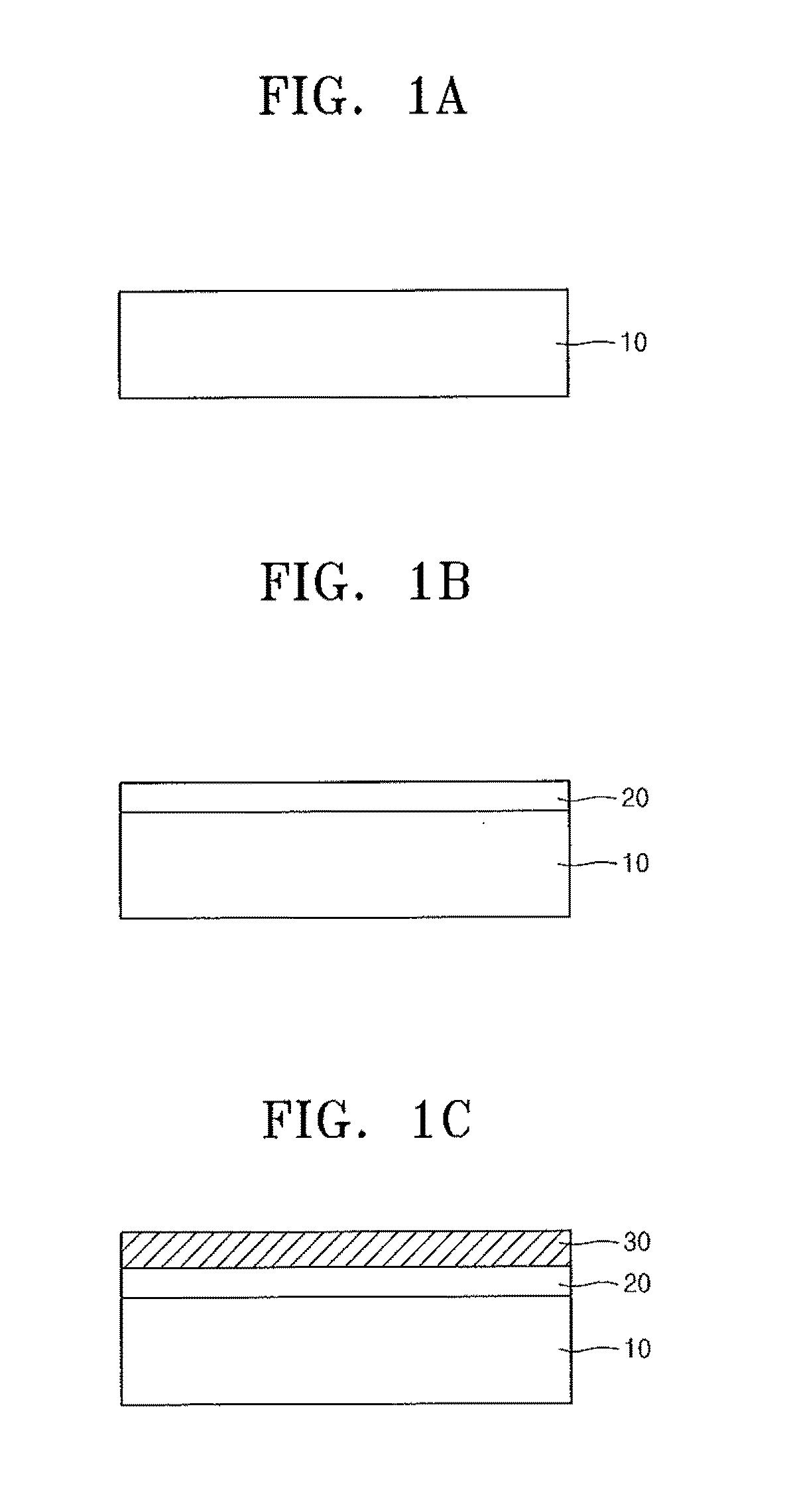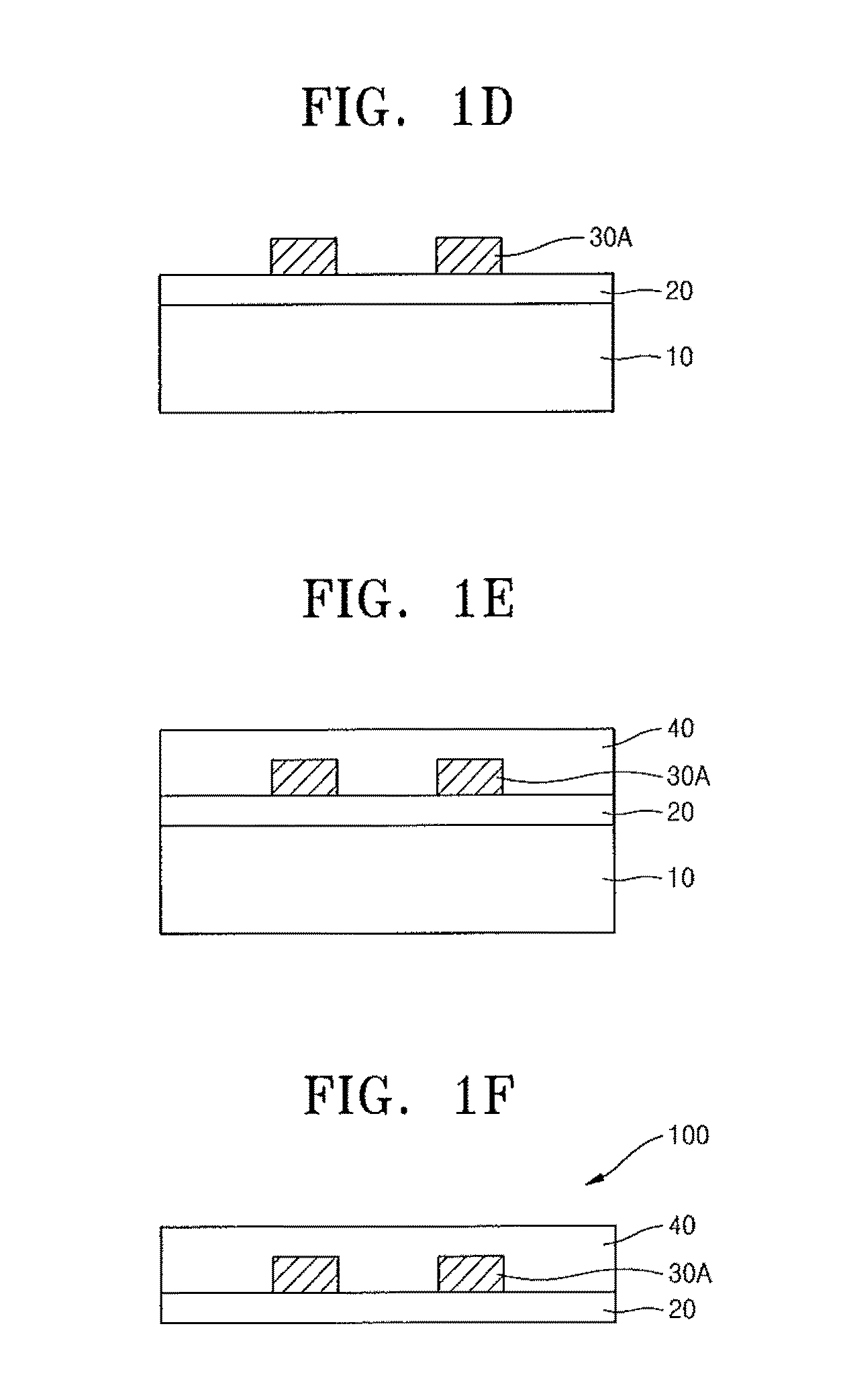Compound containing crosslinkable moieties, prepolymer, blend and polymer sheet obtained therefrom, and waveguide for optical interconnection
a crosslinkable moiete and thick film technology, applied in the preparation of organic compounds, optical devices, instruments, etc., can solve the problems of difficult to obtain thick films, limited concentration of polymer solutions, and optical loss, and achieve low propagation loss, excellent mechanical properties, and efficient use
- Summary
- Abstract
- Description
- Claims
- Application Information
AI Technical Summary
Benefits of technology
Problems solved by technology
Method used
Image
Examples
example 1
Synthesis of Compound 3 (2-(2-{2-[1,1-Difluoro-2-(2,3,5,6-tetrafluoro-4-vinyl-phenoxy)-ethoxy]-1,1,2,2-tetrafluor o-ethoxy}-1,1,2,2-tetrafluoro-ethoxy)-2,2-difluoro-ethanol)
[0140]20 g of (fluorinated tetraethylene)glycol [2] and 11.4 g of 2,3,4,5,6-pentafluorostyrene [1] were dissolved in 40 mL of anhydrous N,N′-dimethyl acetamide (DMAc) in a 100 mL 2-neck flask under nitrogen, and 10.2 g of potassium carbonate was added thereto as a catalyst. The reaction was performed under nitrogen at a temperature ranging from 80 to 90° C. for about 24 hours. After the reaction was terminated, the reaction solution was cooled at room temperature and poured into distilled water. After the resultant was subjected to extraction using ethyl acetate, ethyl acetate was evaporated, and the resultant was dried in vacuum at 35° C. A brown resultant was purified by column chromatography using ethyl acetate / hexane (1 / 5, v / v) as an eluent to obtain a colorless transparent liquid product.
[0141]Yield: 12.78 g...
example 2
Synthesis of Compound 5
(2-{2-[1,1-Difluoro-2-(2,3,5,6-tetrafluoro-4-vinyl-phenoxy)-ethoxy]-1,1,2,2-tetrafluoro-ethoxy}-2,2-difluoro-ethanol)
[0142]20 g of (fluorinated triethylene)glycol [4] and 13.2 g of 2,3,4,5,6-pentafluorostyrene [1] were dissolved in 40 mL of anhydrous N,N′-dimethyl acetamide (DMAc) in a 100 mL 2-neck flask under nitrogen, and 14 g of potassium carbonate was added thereto as a catalyst. The reaction was performed under nitrogen at a temperature ranging from 80 to 90° C. for about 24 hours. After the reaction was terminated, the reaction solution was cooled at room temperature and poured into distilled water. After the resultant was subjected to extraction using ethyl acetate, ethyl acetate was evaporated, and the resultant was dried in a vacuum at 35° C. A brown resultant was purified by column chromatography using ethyl acetate / hexane (1 / 5, v / v) as an eluent to obtain a colorless transparent liquid product.
[0143]Yield: 13.52 g (42%); IR (KBr, cm−1): 3374 (m, O—...
example 3
Synthesis of Compound 8
[0144]10 g of decafluorobiphenyl (6) and 4.80 g of 2,2′-bis (4-hydroxyphenyl)hexafluoro propane (7) were dissolved in 28 mL of anhydrous N,N′-dimethyl acetamide (DMAc) under nitrogen, and 6.0 g of potassium carbonate was added thereto as a catalyst. The reaction was performed under nitrogen at a temperature ranging from 80 to 90° C. for about 24 hours. After the reaction was terminated, the reaction solution was cooled at room temperature, poured into distilled water, washed, and dried under vacuum at 80° C.
[0145]Yield: 10.70 g (77.8%);IR (KBr, cm−1): 3056 (w, ═C—H str., aromatic); 1608, m, C═C str., aromatic); 1178, 1076 (s, C—O str., ether). 1H NMR (Chloroform-d1, ppm): 7.46-7.07 (m, 8H, aromatic). 19F NMR (Chloroform-d1, ppm): −64.11 (s, 6F); −137.39 (m, 4F); −137.58 (m, 4F); −149.90 (m, 2F); −152.43 (m, 4F); −160.38 (m, 4F).
PUM
| Property | Measurement | Unit |
|---|---|---|
| temperature | aaaaa | aaaaa |
| structures | aaaaa | aaaaa |
| viscosity | aaaaa | aaaaa |
Abstract
Description
Claims
Application Information
 Login to View More
Login to View More - R&D
- Intellectual Property
- Life Sciences
- Materials
- Tech Scout
- Unparalleled Data Quality
- Higher Quality Content
- 60% Fewer Hallucinations
Browse by: Latest US Patents, China's latest patents, Technical Efficacy Thesaurus, Application Domain, Technology Topic, Popular Technical Reports.
© 2025 PatSnap. All rights reserved.Legal|Privacy policy|Modern Slavery Act Transparency Statement|Sitemap|About US| Contact US: help@patsnap.com



